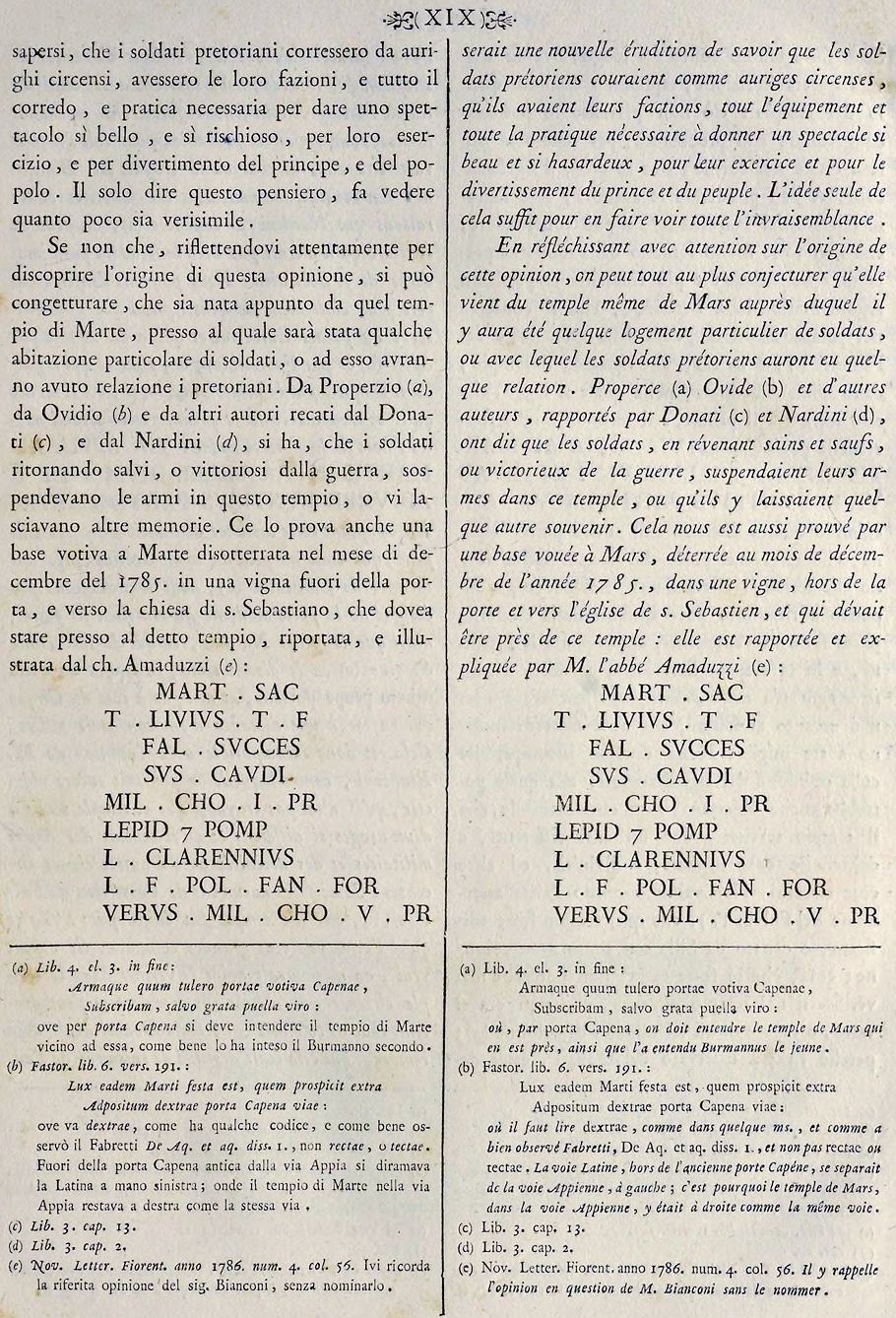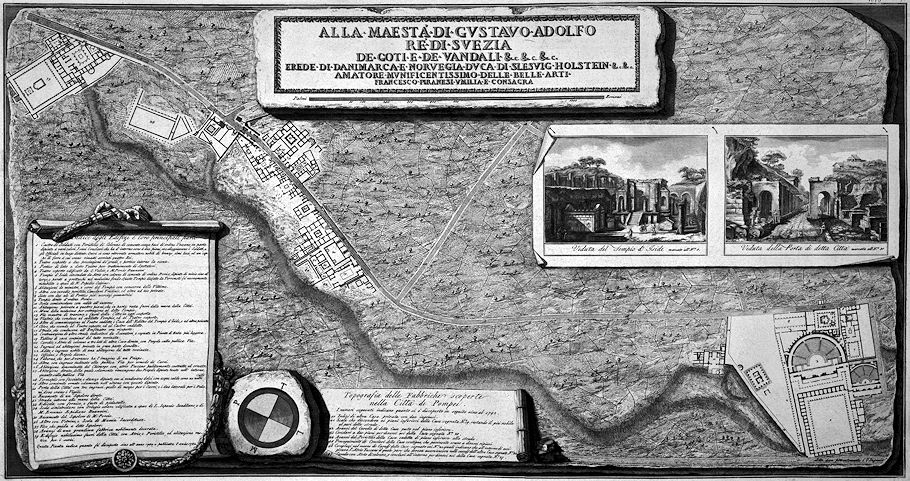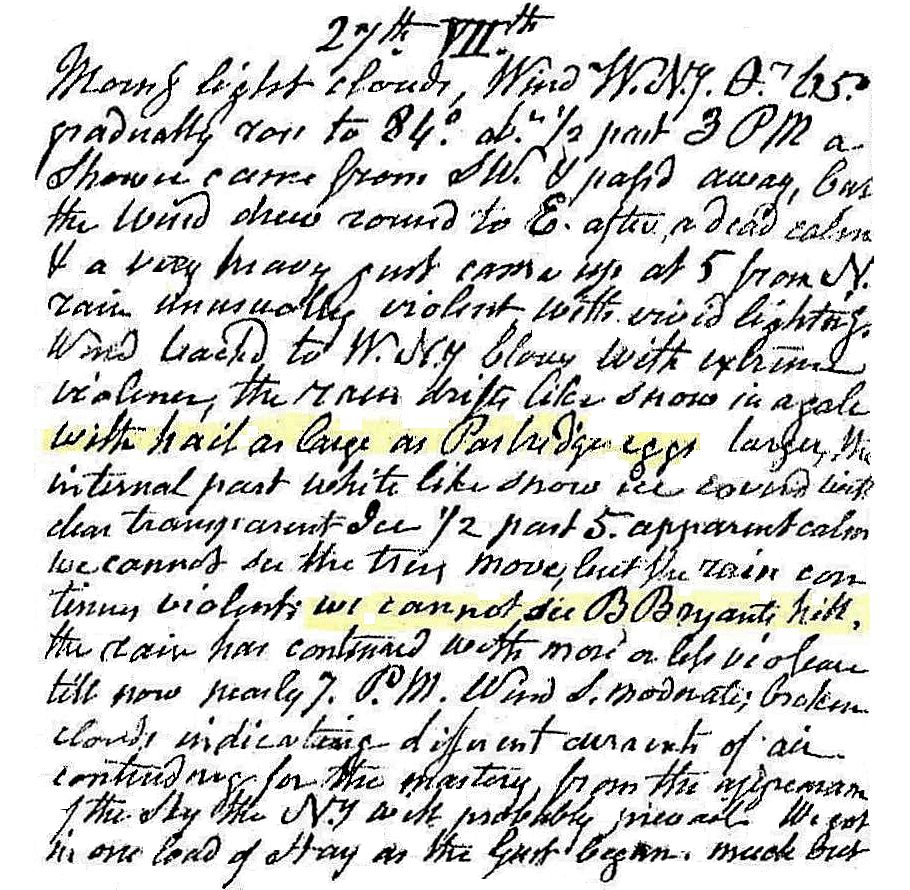27 June 1778 Saturday
[...a crazy 'what if?' came to mind:]
What if Piranesi himself told Bianconi that, in apprenticeship years, he threatened Vasi with a knife? And, afterwards, Piranesi told Francesco that, if Bianconi ever published the story that Piranesi threatened Vasi with a knife, then Francesco could disgrace Bianconi with charges of defamation and even ultimate censure.
"Well, you certainly made that easy. Just let me know if you tell him anything else."
"Trust me. It will be eine Überraschung!"*
Lots of laughter.
*Bianconi never tired of telling (anyone) of his many Saxon Überraschungen.
1789
Descrizione dei circhi, particolarmente di quello di Caracalla e dei giochi in esso celebrati
Description of circuses, particularly that of Caracalla and the divine games celebrated in it

It would therefore be a new erudition, to know that the Praetorian soldiers ran as circus charioteers, had their own factions, and all the equipment, and necessary practice to give a show so beautiful, and so risky, for their exercise, and for the amusement of the prince, and of the people. Just saying this thought shows how little it is likely.
Except that, reflecting carefully to discover the origin of this opinion, it can be conjectured that it was born precisely from that temple of Mars, near which there must have been some particular dwelling of soldiers, or to which the Praetorians must have had a relationship. From Propertius (a), Ovid (b) and other authors brought by Donati (c), and Nardini (d), we have that the soldiers returning safe, or victorious from the war, suspended their weapons in this temple, or they left other memories. This is also proved by a votive base to Mars unearthed in the month of December 1785 in a vineyard outside the gate, and towards the church of S. Sebastiano, which must have stood near the said temple, reported and illustrated by ch. Amaduzzi (e):
MART . SAC
T . LIVIVS . T . F
FAL . SVCCES
SVS . CAVDI.
MIL . CHO . I . PR
LEPID 7 POMP
L . CLARENNIVS
L . F . POL . FAN . FOR
VERVS . MIL . CHO . V . PR
34 y.o. Francesco Piranesi 1792
Plan of the Excavations at Pompeii
TO THE MAJESTY OF GUSTAVO ADOLFO KING OF SWEDEN DE GOTHS AND DE VANDALS &c.&c.&c. HEIR OF DENMARK AND NORWAY DUKE OF SLESVIG HOLSTEIN &c.&c.
VERY NICE LOVER OF THE FINE ARTS
FRANCESCO PIRANESI HUMILLIA AND CONSECRATE

Index of buildings and their main parts
1 Castro dé Soldati with Peristyle of concrete columns without bases of the Tuscan order, partly painted in various colours. Its Conclaves which surround it are on two floors where the Soldiers lodged; and the Officials in a separate place. Here were found noble bronze armours, smooth helmets, and an iron block to which four Rei had remained entangled.
2 Open-air theater with two precincts of degrees and portico around the stage.
3 Portico on the side of said Theater for entertaining Spectators.
4 Covered theater built by Q. Valcio and M. Porcio Duunviri
5 Temple of Isis surrounded by an Atrium with concrete columns of the Doric order, painted with red lead up to the third: and grotesque walls in the same background. This temple destroyed by earthquakes was again re-established at the expense of N. Popidio Celsino.
6 Homes of ministers and servants of the Temple with remains of the Victims.
7 Other with peristyle atrium, Conclave Triclinium, and other for private use.
8 Sixtus with two wings of Portico for gymnastic exercises
9 Ruined temple of the Doric order.
10 Semicircular school with seats around it.
11 Private house with four floors, which in part remains outside the city walls.
12 Walls of the same for substructure to the said Temple.
13 Via maestra sideways, and outside the city now uncovered
14 Viatrium, which leads to the aforementioned Temple, and to the open Theater.
15 Other of communication to the aforementioned Theater, and House of the Editus of the Temple of Isis, and to another private one.
16 Clivo, which descends to the covered Theater, and to the aforementioned Castro.
17 Street, which led to the now covered Amphitheater.
18 Continuation of other roads indicated to us by Excavators, and marked in a lighter shade on the Map.
19 Tablinum of a conspicuous house completely ruined.
20 Cavedio or Atrium of clones on three sides of another ruined house, with pergolas on the public street.
21 Entrances to private houses largely demolished.
22 Entry or noble entrance to a completely ruined house.
23 different workshops or pergolas.
24 Taberna, which for Averuncus has the image of a Priapus.
25 Other with inclined entrance to the public Via dei Carri for convenience.
26 Dwelling known as the Surgeon with a neatly constructed and ornate Tuscan atrium.
27 Ruined dwelling, of which only two painted Pergolas remain both inside and on the public Via
28 Thermopylae with facade and painted rooms where sweets with hot water were sold like in our cafes.
29 Other similar ornamented only on the outside with painted plinth.
30 City gate with three entrances, the middle one for the wagons, and the two lateral ones for the pedestrians, where the traffic police were.
31 Base of a ruined Sepulcher.
32 Road around the City Walls.
33 Aedicule with archway and pedestal shaft.
34 Semicircular school with solar clock built at the expense of L. Sepunio Sandilano and M. Erennio Epidiano Duunviri.
35 Base of the Sepulcher of M. Porcio.
36 Other with Ustrino, and Scola di Mamia Priestess.
37 Vico, which leads to the said Sepulchre.
38 Remains of a grandiose, nobly decorated building.
39 Very noble building outside the city with Atrium and Peristyle, and rustic dwelling for the servants.
This Map indicates what was discovered up to the year 1780. and published in the year 1785.
Topography of the factories discovered in the city of Pompeii.
The following numbers indicate what was subsequently discovered up to 1792.
40 Indications of another private house with two entrances.
41 Staircase that descended to the lower floors of the House marked N.o19. Remaining the noblest like the road.
42 Leftovers from the atrium of said house located on the lower floor.
43 Conclaves with two floors for different uses of the Casa marked N.o 20.
44 Remains of the peristyle of the aforementioned house on a floor below the street.
45 Continuation of Conclaves of the contiguous House, which likewise were on different levels
46 Compluvi in ??the middle of Cavedj delle Case marked with N.i 21. which indicate that the Atrium Toscano revolved around them, which seems to have still been in the cavedj of the other Houses marked N.i 21.
47 Cavedio with Atrium of columns, and conclaves around it for different uses of the Casa marked N.o 27.
View of the Temple of Isis marked at N.o.5.
View of the gate of the said city marked at number 30
Site where the entrance is currently
27 June 1812 Saturday

Morning light clouds, wind W.Nerly, temperature 65°, gradually rose to 84°. About 1/2 past 3 PM a shower came from SW and passed away, but the wind drew round to E after a dead calm and a very heavy gust came up at 5 from N. Rain unusually violent with vivid lightening. Wind backed[?] to W.Nerly blows with extreme violence. The rain drifts like snow in a gale with hail as large as partridge eggs, larger, the internal part white like snow-ice covered with transparent ice. 1/2 past 5 apparent calm, we cannot see the trees move, but the rain continues violent; we cannot see B Bryant's hill. The rain has continued with more or less violence till now nearly 7 PM. Wind S moderate, broken clouds indicating different currents of air continuing for the mastery[?]. From the appearance of the sky the Nerly will probably prevail. We got in one load of hay as the gust began. Much out.
27 June 2005
architects. do you feel respected?
I saved two people once. It was the end of July and the beginning of August 1989 at Savannah Beach, Tybee Island. The first week of my vacation was over, and the first week's house guests had left, and I was then waiting for the second week's house guests to start arriving. The house was on one of the lanes in-between the numbered streets and second in from the beach. Since it was late afternoon, I left a note for my guests and decided to take a stroll on the beach. The beach was deserted, as was usual for that time of day, and I didn't even notice the couple way out in the water holding on to an inflated raft until the guy waved and yelled "Hey!" I thought he was being friendly, so I waved back and continued to stroll. Then I faintly heard, "We can't get back in." Within a second or two I thought, "Oh dear. Those people are going to be carried away rather quickly because I'd been watching the tidal movements the whole prior week. By the time I go back to the house and call for help they'll be way out there." Then I yelled back, "OK" and just started to swim out to them. I'm only an average swimmer, but I'm a great floater, so I wasn't really worried about myself. When I got to them I saw they were a couple, maybe married, maybe boyfriend and girlfriend, and they looked horribly sad. I just started to push them in, kicking my feet as much as possible, and, as slight waves came along, I told them to paddle with their feet as well (I haven't done it in years, but I used to spend whole afternoons body surfing whenever I was down the Jersey shore). Finally, our feet could touch bottom, and we all just began sighing with relief. On shore, we just stood there for a few seconds, they thanked me and I said you're welcome, and we walked away in different directions. Almost just then, I saw some of the second week's house guests walking onto the beach. They were all excited and they were thrilled about the location. I said, "You see those two people walking down the beach? I just saved their lives."
27 June 2006
Re: Helen and the True Cross
Is there any truth to this:
Mgr Duchesne states that this Holy Cross day in September was a festival of Palestinian origin, "on the anniversary of the dedication of the basilicas erected under Constantine on the sites of Calvary and the Holy Sepulchre", and he adds: "This dedication festival was celebrated in 335 by the bishops attending the Council of Tyre, who had pronounced upon Athanasius the sentence of deposition. There was associated with it also the commemoration of the discovery of the true cross", which was "exalted" before the people.
--September 14, Butler's Lives of the Saints
=====
Averil, I am familiar with Averil Cameron and S.G. Hall, The Life of Constantine, in fact, I used your and an earlier translation of the Vita Constantini to see what would happen if the passages from Book III (24-53) were in chronological order, rather than the disorder that you and Hall suggest (and an abstract of this exercise is within the lt-antiq archives 2001).
24... But there may be an opportunity to assemble these [letters] in a special collection, so as not to disrupt the sequence of our present account.
--Eusebius, Cameron/Hall translation
25... Eusebius moves straight from the account of the Council of Nicaea and its aftermath to the excavation and discovery of the tomb of Jesus, without finishing his account of Constantine's Vicennalia, which ended 25 July 326. This is understandable.
--Cameron/Hall commentary
Understandable yes, but not necessarily correct. It could just as well be that "the excavation and discovery of the tomb of Jesus" occurred a few months after the Council of Nicaea, thus corresponding with Eusebius' "sequence of our present account".
43.4-47.3. The death of the Empress Helena
46.2 Having settled her affairs in this way, she finally came to the end of her life. So great a son was present and stood by her, ministering and holding her hands..."
--Eusebius, Cameron/Hall translation
46.2 "...she was buried in a porphyry sarcophagus in a mausoleum in a mausoleum on the Via Labicana in Rome..."
--Cameron/Hall commentary
After the Vicennalia 25 July 326, Constantine left Rome 3 August 326 and never returned to Rome.
47.4-49 Constantinople
52... The greatest single service to us by my most saintly mother-in-law has been to inform us through her letters to us of the mad folly of evil men [at Mamre], which has so far escaped attention among you, so that the neglected fault may receive appropriate corrective and restorative action from us, late perhaps but yet necessary.
--Constantine, Cameron/Hall translation
51-3... Constantine had been told of the pagan worship on the site in letters from Eutropia, the mother of Fausta, who evidently visited Palestine; Rubin, 'Church of the Holy Sepulchre', 90, places her visit between the defeat of Licinius and the Council of Nicaea (see also Walker, Holy City, Holy Places, 276), and the reference to her becomes more comfortable if the visit took place before the death of her daughter Fausta in 326. Rubin ingeniously argues that Eusebius deliberately includes the letter so as to expose his rival Marcarius, who, however, was soon to assume the role of guide to Constantine's own mother Helena ('Church of the Holy Sepulchre', 88-91, accepted by Walker, Holy City, Holy Places, 276n.); it seems more likely that he includes the letter in order to make his dossier of Constantinian documents as complete as possible. Marcarius is not named by Eusebius, but this is in accordance with his normal practice (see e.g. on IV.61.2-3). Constantine's letter is placed out of chronological order, which serves to reduce the importance of Eutropia.
--Cameron/Hall, commentary
So we have Constantine himself saying "late perhaps", yet Rubin says Eutropia was in Palestine before the Council of Nicaea, and this is somehow "ingenious"(?). I don't find any of this "comfortable" at all. For a start, isn't Rubin's date for Eutropia in Palestine one of his own design choice as opposed to based on any historical evidence? And, more importantly, there is no real indication that Eutropia was even writing from Palestine when she wrote to Constantine about Mamre.
Re: Helen and the True Cross
Borgehammar and Drijvers will only get you so far. Otherwise, there's lots more "legend" within [Quondam's] archives.
I'm now at the point where I believe there are two possibilities as to how the legend of the True Cross originated:
1. The event actually did occur 14 September 325, with Helena and Eutropia present at the destruction of the Temple of Venus at Calvary. Subsequent to Helena's death at/near Naples 24/25 July 326, however, an imperially decreed law of silence regarding Helena and the Cross was proclaimed. Ambrose broke the silence 25 February 395 with his obituary of Theodosius.
2. The event was fabricated and put into effect by Helena and Eutropia 14 September 325. Subsequent to the death of Crispus spring 326 and then the death of Helena 24/25 July 326 and the suicide of Fausta 25 July 326, chaos and threat to the imperial position ensued, thus a law of silence regarding the fabricated legend of the True Cross was quickly proclaimed by Constantine at Eutropia's suggestion. Ambrose then broke the silence 25 February 395 and the fabricated discovery of the True Cross became an article of the Christian faith.
[There's a great line in Mapp and Lucia: "It is ridiculous that we must break ourselves of the habit of doing something that we cannot even do."]
Anyway, that's where the latest legend of Helena and the True Cross presently ends.
27 June 2013
architecture's self-reflective dialectic
"In the process of demonstrating the open-endedness of architecture's self-reflective dialectic as well as its fictitious beginnings, Eisenman analytically "read" a series of architects throughout his career, whose structures would disintegrate into radically self-contradictory configurations in the process: Andrea Palladio, Giambattista [sic] Piranesi, and Giuseppe Terragni were his main critical templates to corroborate that the discipline had always hinted at an awareness of its paradoxical foundations; the critical dimension of architecture was just less subdued with these architects, and hence their analyses released the whole (ironic) critical-constructive paradoxes of architecture. For example, in his etchings for a map of the Campo Marzio dell'antica Roma from 1762, Piranesi had proliferated the classical compositional logic of architecture to a point where his two-dimensional plan could no longer correspond to the three-dimensional ideal of a "classical" urban space; Piranesi had created a formal hyperbole out of the accepted rules of classical composition only to demonstrate the logical collapse of these very rules. Piranesi "concretized" the idea of language's sublime open-endedness into a physical reality that took on characteristics of the grotesque: "Whereas the sublime deals with qualities of the airy, qualities which resist physical occupation," Eisenman argued, "the grotesque deals with real substance, with the manifestation of the uncertain in the physical." With Piranesi, classical architecture used its own mechanism for self-annihilation--in a sense, it "swallowed its own stomach." Alongside Piranesi, Eisenman also made Palladio and Terragni into demonstrations of the breakdown of the established architectural canon at their respective moments in time. He rhetorically fleshed out their formal "disturbances" in the accepted compositional standards of architecture and propagated them ad nauseam into self-contradictory diagrams of formal fragments. Once again the temporal dialectic of postulation and refutation was in and of itself materialized as "architecture.""
Emmanuel Petit, Irony or, the Self-Critical Opacity of Postmodern Architecture (New Haven: Yale University Press, 2013), p. 175.
Petit's explanation of Eisenman's analysis of Piranesi's Ichnographia Campus Martius is really only a paraphrasical reiteration of Tafuri's critique of the Campo Marzio plan. Furthermore, Eisenman's quote regarding the sublime stems from a text that has nothing directly to do with Piranesi and/or the Campo Marzio plan.
Nonetheless, Petit's explanation raises various questions, such as:
What is "the classical compositional logic of architecture" and how exactly did Piranesi proliferate the classical compositional logic of architecture?"
What is "the three-dimensional ideal of a "classical" urban space" that Piranesi's two-dimensional plan could no longer correspond to?
If Piranesi did indeed create "a formal hyperbole out of the accepted rules of classical composition," then how exactly did he then simultaneously "demonstrate the logical collapse of these very rules?"
Once again, it is really only Tafuri who ever attempts to substantiate the above claims regarding what Piranesi supposedly did via the Campo Marzio, yet even Tafuri's 'evidence' does not rightly correspond with what is actually present within Piranesi's large plan.
So then, what exactly do the superfluity of Piranesi's original building plans within the Ichnographia Campus Martius signify, disclose, communicate and represent? What were the ingredients of inspiration, and what prompted this burst of planimetric imagination in the first place? Appropriately enough, a nascent answer to these questions comes from Piranesi himself, where, in the dedication to the Campo Marzio, he cites the Forma Urbis, Hadrian's Villa and more as exemplars:
I am rather afraid that parts of the Campus which I describe should seem figments of my imagination and not based on any evidence: certainly if anyone compares them with the architectural theory of the ancients he will see that they differ greatly from it and are actually closer to the usage of our own times. But before anyone accuses me of falsehood, he should I beg, examine the ancient [Marble] plan of the city . . . he should examine the villas of Latium and that of Hadrian at Tivoli, the baths, the tombs and other ruins outside the Porta Capens and he will find that the ancients transgressed the strict rules of architecture just as much as the moderns. Perhaps it is inevitable and a general rule that the arts on reaching a peak should decline, or perhaps it is part of man's nature to demand some license in creative expression as in other things which we sometimes criticise in buildings of our times.
Thus, following Piranesi's lead, the investigation commences.
dialectic 1 : the theory and practice of weighing and reconciling juxtaposed or contradictory arguments for the purpose of arriving at truth esp. through discussion and debate
27 June 2020

27 June 2022
The assimilation of counteractive knowledge led to the purge of misconceptions, and the critically necessary destructive tasks of scraping and burnishing metabolized seven elegant circus plans, seven unique Piranesi designs, to near oblivion, thus making way for ensuing corrective creations. Unlike damnatio memoriae, however, "memories" remain in the already-printed first versions of the plans, indeed memories from when Piranesi first etched the circus plans flooded his mind as Laura and he executed their erasure. Piranesi's ichnographic design skill was at its prime when the Circus Maximus plan within 'Pianta dell antico Foro Romano' was initially etched, and all the quondam circus plans within the 'Ichnographia Campus Martius' further exhibited Piranesi's design maturity. Each circus plan was perfectly fine, except for its symmetry.
27 June 2023 Tuesday
. . . . . .
|